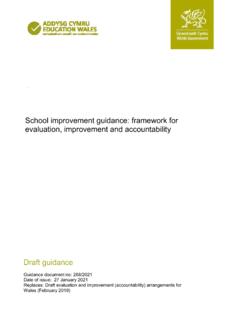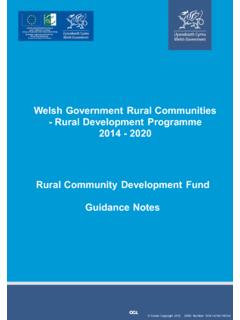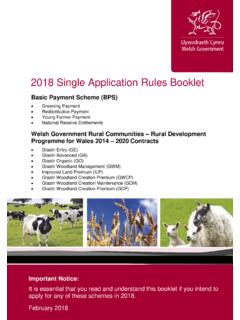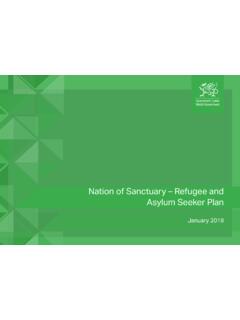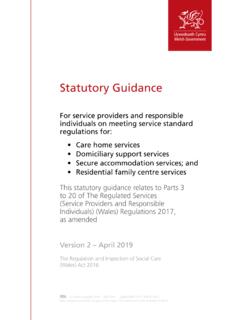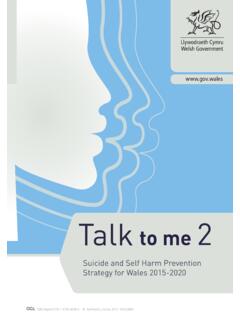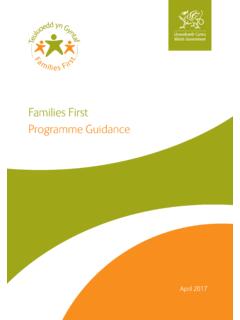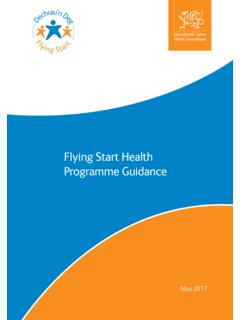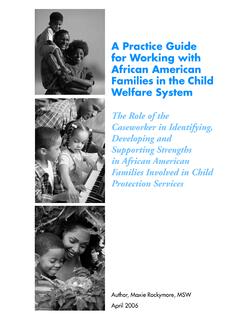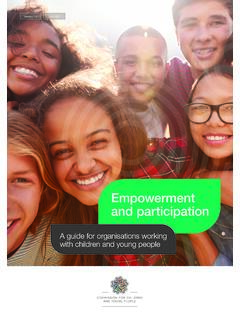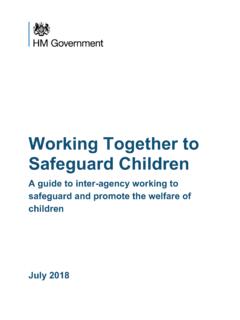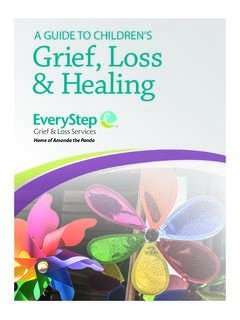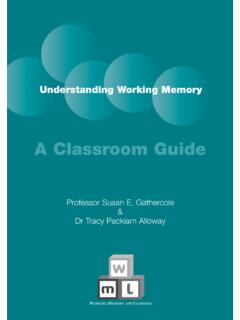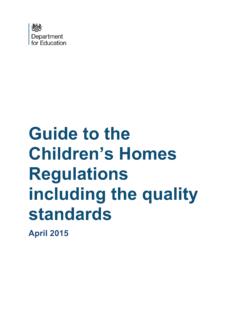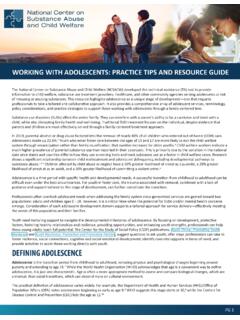Transcription of Social Services and Well-being (Wales) Act 2014
1 working Together to Safeguard People Information sharing to safeguard childrenNon-statutory guide for practitionersSocial Services and Well-being (Wales) Act 2014 July 2019 Information sharing to safeguard childrenNon-statutory guide for practitionersIssued under Section 28 of the children Act 2004. Chapter / ContentsSummary 2 The seven golden rules to sharing information 3 The General Data Protection Regulation (GDPR) and Data Protection Act 2018 4 Sharing information to support safeguarding 5 Spotting the signs of abuse, neglect and taking action when a child is at risk 5 Legislative framework for sharing information to safeguard children 7 The principles 9 Myth-busting guide 11 Digital ISBN 978-1-83876-575-0 Crown copyright 2019 WG38137 Mae r ddogfen yma hefyd ar gael yn document is also available in Welsh.
2 working Together to Safeguard People: Non-statutory guide on information sharing to safeguard children 2 Summary Information sharing is central to good safeguarding practice. Practitioners must share information in accordance with the General Data Protection Regulation (GDPR) and the Data Protection Act 2018, referred to as the UK s data protection legislation. The data protection legislation allows for the sharing of information and should not be automatically used as a reason for not doing so. One of the specific circumstances which provides for information sharing is in order to prevent abuse or serious harm to others. A key theme emerging from Child Practice Reviews is the need for better multi-agency communication and information sharing.
3 When information is not shared in a timely and effective way decisions about how to respond may be ill informed and this can lead to poor safeguarding practice and leave children at risk of significant harm. About this guide The Welsh Government has produced this non-statutory guide to remind practitioners working across agencies of their responsibilities to share information to safeguard children and to support them in understanding the conditions under which information may be shared. This guide does not deal in detail with inter-agency arrangements for sharing personal information between organisations or as part of shared IT systems. However safeguarding is everyone s responsibility and Information Sharing Protocols can assist agencies in this role and in promoting the Well-being of people to prevent risk of harm.
4 Who is this guide for? This advice is for all front line practitioners and managers working with children (up to the age of 18 years), parents, carers and families who have to make decisions about sharing personal information on a case-by-case basis, where there are safeguarding concerns. working Together to Safeguard People: Non-statutory guide on information sharing to safeguard children 3 Golden rules to sharing information 1. Remember that the General Data Protection Regulation (GDPR), Data Protection Act 2018 and human rights law are not barriers to justified information sharing, but provide a framework to ensure that personal information about living individuals is shared appropriately.
5 2. Be open and honest with the individual (and/or their family where appropriate) from the outset about why, what, how and with whom information will, or could be shared, and seek their agreement, unless it is unsafe or inappropriate to do so. 3. The GDPR gives people the right to be informed, which means they need to be made aware of how their data is being used. However, under the GDPR and Data Protection Act 2018 you may share information without consent if, in your judgement, there is a lawful basis to do so. You will need to base your judgement on the facts of the case. When you are sharing or requesting personal information from someone, be clear of the basis upon which you are doing so.
6 Where you do not have consent, be mindful that an individual might not expect information to be shared. 4. Seek advice from other practitioners, or your information governance lead, if you are in any doubt about sharing the information concerned, without disclosing the identity of the individual where possible. 5. Consider safety and Well-being : base your information sharing decisions on considerations of the safety and Well-being of the individual and others who may be affected by their actions. 6. Necessary, proportionate, relevant, adequate, accurate, timely and secure: ensure that the information you share is necessary for the purpose for which you are sharing it, is shared only with those individuals who need to have it, is accurate and up-to-date, is shared in a timely fashion, and is shared securely (see Principles).
7 7. Keep a record of your decision and the reasons for it whether it is to share information or not. If you decide to share, then record what you have shared, with whom and for what purpose. working Together to Safeguard People: Non-statutory guide on information sharing to safeguard children 4 The General Data Protection Regulation (GDPR) and Data Protection Act 2018 The General Data Protection Regulation (GDPR) and the Data Protection Act 2018 introduce new elements to the data protection regime, superseding the Data Protection Act 1998. Practitioners must have due regard to the relevant data protection principles which allow them to share personal information. The GDPR and Data Protection Act 2018 place greater significance on organisations being transparent and accountable in relation to their use of data.
8 All organisations handling personal data need to have comprehensive and proportionate arrangements for collecting, storing, and sharing information. The GDPR and Data Protection Act 2018 do not prevent, or limit, the sharing of information for the purposes of keeping children and young people safe. To effectively share information: all practitioners should be confident of the processing conditions, which allow them to store, and share, the information that they need to carry out their safeguarding role. Information which is relevant to safeguarding will often be data which is considered special category personal data meaning it is sensitive and personal. where practitioners need to share special category personal data, they should be aware that the Data Protection Act 2018 includes safeguarding of children and individuals at risk as a condition that allows practitioners to share information without consent.
9 Information can be shared legally without consent, if a practitioner is unable to, cannot be reasonably expected to gain consent from the individual, or if to gain consent could place a child at risk. relevant personal information can be shared lawfully if it is to keep a child or individual at risk safe from neglect or physical, emotional or mental harm, or if it is protecting their physical, mental, or emotional Well-being . It is also important that: Fears about sharing information should not be a barrier to safeguarding and promoting the Well-being of children at risk of abuse or neglect. Every practitioner must take responsibility for sharing the information they hold, and cannot assume that someone else will pass on information, which may be critical to keeping a child safe.
10 working Together to Safeguard People: Non-statutory guide on information sharing to safeguard children 5 Practitioners must understand how to work in collaboration with other agencies to share information in a proportionate and timely way to prevent harm. Sharing information to support safeguarding Effective safeguarding arrangements in every local authority area should be underpinned by two key principles1: Safeguarding is everyone s responsibility: for Services to be effective each practitioner and agency must play their full part both individually and in collaboration; A child-centred approach: for Services to be effective they should be based on a clear understanding of the personal outcomes for the child and what matters to them.
